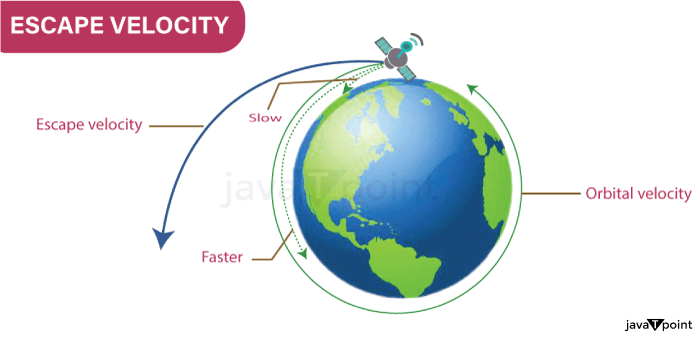Escape VelocityEscape velocity is the minimum velocity required for an object to escape the gravitational pull of a celestial body, such as a planet or a moon. The concept of escape velocity is crucial to understanding the behavior of objects in space, including spacecraft and natural satellites. In this article, we will explore the concept of escape velocity, how it is calculated, and its applications in space exploration. 
Gravity is a fundamental force that governs the motion of objects in the universe. It is the force that pulls objects towards each other and keeps them in orbit around each other. The strength of the gravitational force depends on the mass of the objects and the distance between them. The larger the mass of an object, the stronger its gravitational force. Similarly, the closer two objects are, the stronger their gravitational force. Escape velocity is the velocity required for an object to escape the gravitational pull of a celestial body and move into space. If an object is launched with a velocity less than the escape velocity, it will eventually fall back to the surface of the celestial body. On the other hand, if the object is launched with a velocity greater than the escape velocity, it will escape the gravitational pull and move away from the celestial body. The formula to calculate the escape velocity is given by: v = sqrt(2GM/R) where v is the escape velocity, G is the gravitational constant, M is the mass of the celestial body, and R is the distance from the center of the celestial body to the object's initial position. The formula shows that the escape velocity is directly proportional to the mass of the celestial body and inversely proportional to the distance from the center of the celestial body. This means that the larger the mass of the celestial body or the closer an object is to its center, the greater the escape velocity required. For example, the escape velocity of Earth is approximately 11.2 kilometers per second (km/s), while the escape velocity of the Moon is only 2.38 km/s. This means that it is easier to escape the Moon's gravitational pull than Earth's, as it requires less energy to reach the escape velocity. Applications of Escape Velocity
ConclusionIt is related to many other concepts, such as gravity, geostationary orbit, and the behavior of comets and asteroids. As we continue to explore the solar system and beyond, the escape velocity will remain an important consideration for space missions and the colonization of other planets and moons. In conclusion, escape velocity is a fundamental concept in space exploration and the behavior of objects in space. It is the minimum velocity required for an object to escape the gravitational pull of a celestial body and move into space. The formula for escape velocity shows that it is directly proportional to the mass of the celestial body and inversely proportional to the distance from its center. This means that the larger the mass of the celestial body or the closer an object is to its center, the greater the escape velocity required. The practical applications of escape velocity include launching spacecraft into space, using gravity assist to change trajectory, and understanding the behavior of natural satellites.
Next TopicEscape Velocity Formula
|
 For Videos Join Our Youtube Channel: Join Now
For Videos Join Our Youtube Channel: Join Now
Feedback
- Send your Feedback to [email protected]
Help Others, Please Share









